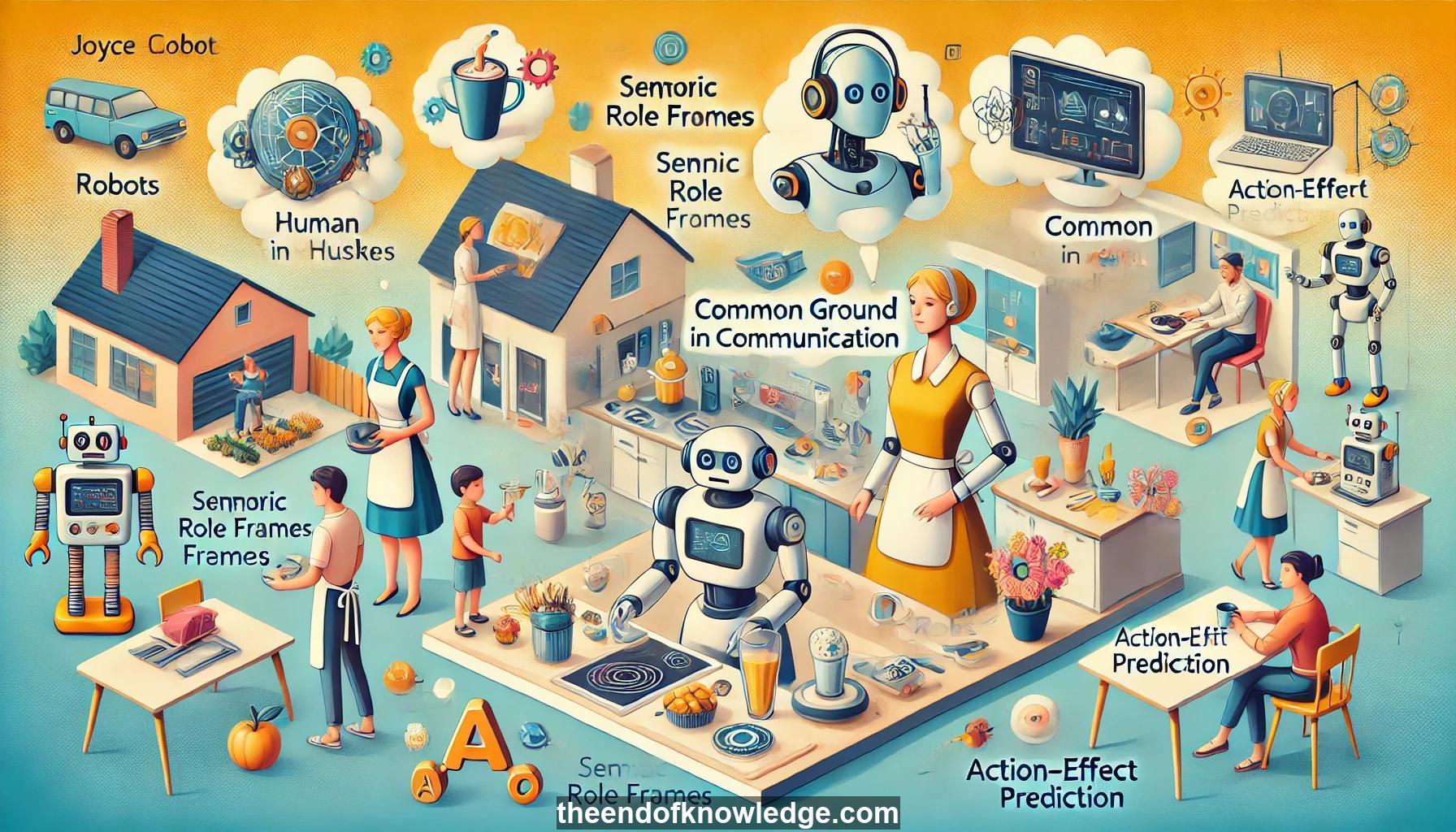 >
>
Concept Graph & Resume using Claude 3.5 Sonnet | Chat GPT4o | Llama 3:
Resume:
1.- Interactive task learning: Teaching robots new tasks through natural interaction and communication with humans.
2.- Common ground: Shared knowledge and beliefs that enable effective communication between humans and robots.
3.- Grounding language to perception: Connecting linguistic expressions to objects and events in the physical environment.
4.- Verb semantics: Capturing the meaning of action verbs using frames that specify key ingredients of the action.
5.- Implicit and explicit arguments: Verb arguments that may or may not be explicitly stated in language but are important for understanding.
6.- Causality modeling: Representing how the world changes as a result of actions to guide perception and grounding.
7.- Crowdsourcing action effects: Using human input to collect descriptions of how objects change after specific actions.
8.- Dimensions of change: Identifying 18 dimensions along which objects can change as a result of actions.
9.- Grounding language to action: Translating high-level language commands into sequences of primitive robotic actions.
10.- Grounded verb semantics: Representing verbs in terms of resulting states rather than sequences of primitive actions.
11.- Social pragmatic theory: Children acquire language as a byproduct of social interaction, using basic cognitive skills.
12.- Incremental learning approach: Robots continually acquire and refine verb semantics through interaction with humans and the environment.
13.- Hypothesis spaces: Representing possible verb meanings and generalizing from specific experiences to more abstract concepts.
14.- Reinforcement learning for interaction: Learning when to ask questions to resolve ambiguities in a way that maximizes long-term reward.
15.- Naive physics: Basic understanding of cause-effect relationships between actions and perceived states of the world.
16.- Action effect prediction: Given an action, identifying potential effects, or given an effect, identifying potential causes.
17.- Bootstrapping from web images: Using web-retrieved images to supplement annotated examples for learning action effects.
18.- Dynamic change representation: Using video data to capture the temporal aspects of action effects.
19.- Multidisciplinary collaboration: The need for experts from various fields to work together on language communication with robots.
20.- Rich and interpretable representations: Internal robot representations that can bring humans and robots to a joint understanding.
21.- Incremental and interactive algorithms: Learning methods that support lifelong learning from interactions with humans and the environment.
22.- Incorporating prior knowledge: Providing robots with strong initial knowledge to bootstrap learning.
23.- Causal reasoning: The importance of understanding cause-effect relationships for decision-making and action planning.
24.- Physical vs. social cause-effect knowledge: Distinguishing between knowledge about physical actions and knowledge guiding social interactions.
25.- Combining neural networks and symbolic representations: Using both approaches to leverage their respective strengths.
26.- Social signals in learning: Leveraging body language, eye gaze, and joint attention in human-robot teaching scenarios.
27.- Language-independent representations: Developing internal representations that can work across different human languages.
28.- Extended natural dialogue: The potential role of common sense knowledge in enabling longer, more coherent conversations.
29.- Dexterity challenges: The difficulty of achieving human-level dexterity in robotic manipulation tasks.
30.- Knowledge sharing between robots: The potential for robots to share learned models and adapt them to new situations.
Knowledge Vault built byDavid Vivancos 2024